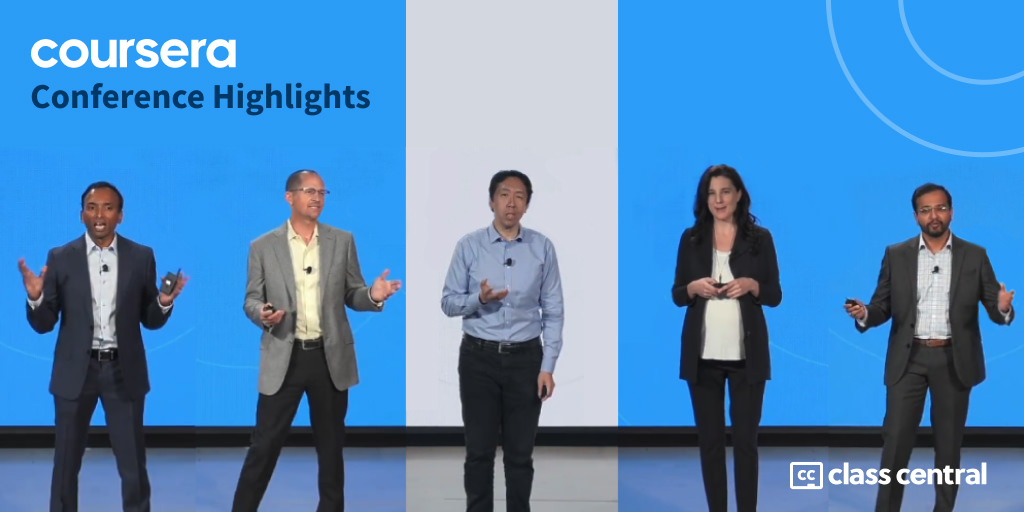Highlights from the Coursera Conference 2021
Coursera introduced five new degrees, shared growth numbers, and talked about new product updates.
Last week, Coursera held its annual conference, the first since the company went public last month.
Usually, the conference is limited to Coursera partners and closed to outsiders. In previous editions, I would hang out on Twitter, monitoring appropriate hashtags, waiting for participants to tweet photos of slides and other important tidbits.
But in 2020, due to the pandemic, the Coursera conference and many others went virtual, making them more accessible to people worldwide. My colleague @heba compiled 200+ hours of conference recordings.
My goal in this article is to strip away the marketing to highlight the essential: some key figures (most from the CEO’s keynote) and new announcements from the product team. You can read my summary of last year’s conference here.
Coursera usually shares its latest numbers. But maybe because they’re now a public company, they only shared numbers up to December 2020. Most were the same they’d included in their IPO prospectus, which I covered in detail here. So I won’t repeat those numbers and instead focus on the new ones I noticed.
New Degrees & Degree Enrollments
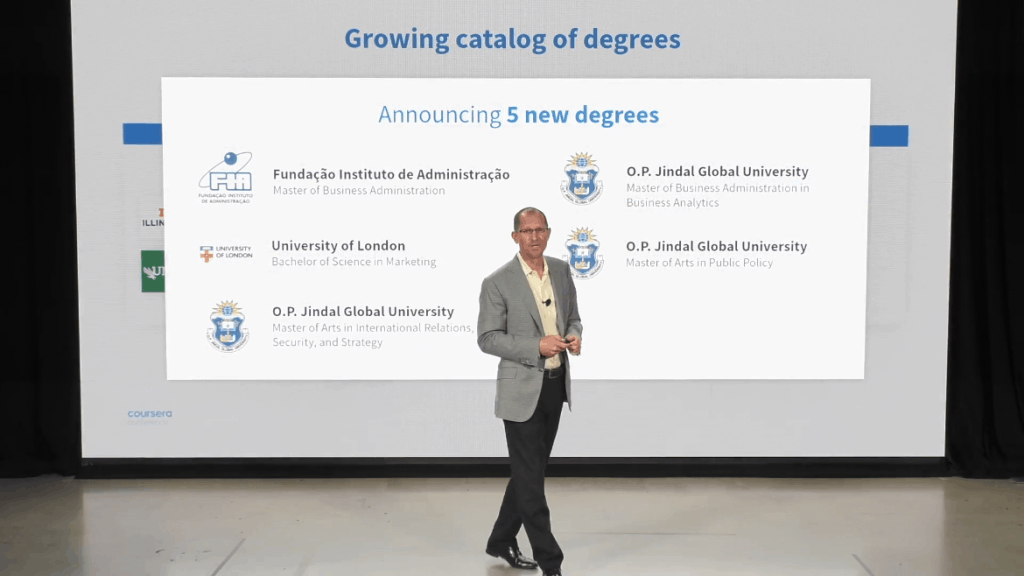
Coursera announced 5 new online degrees, including 3 from its first degree partner in India, and an MBA from Brazil. Coursera has now over 30 degrees on its platform.
| Degree | Institution | Cost |
| MBA | Fundação Instituto de Administração | $10,000 |
| BSc in Marketing | University of London | £12,000 – £16,000 |
| MA in International Relations, Security, and Strategy | O.P. Jindal Global University | $6,000 |
| MA in Public Policy | O.P. Jindal Global University | $6,000 |
| MBA in Business Analytics | O.P. Jindal Global University | $7,500 |
The master’s degrees from O.P. Jindal Global University starts at $6,000. 2020 was the first year Indian universities could offer fully online degrees. Class Central compiled a list of 50+ Indian online degrees and found that the average price for a master’s degree was $2,150.
During his keynote, Coursera CEO Jeff Maggioncalda shared enrollment numbers for two of Coursera’s popular degree programs:
- 4,500 enrollments and 1,500 graduations in Illinois’ iMBA, Coursera’s first online degree.
- 3,000 enrollments (up from 2000 in last year’s keynote) in the University of London’s online bachelor’s in computer science.
This means these two degrees account for over half of Coursera’s degree students: in 2020, Coursera reported a 91% year-over-year increase in degree enrollments to reach 11,900. The success of the University of London’s computer science bachelor’s degree is probably why they decided to launch another one — in marketing, this time.
Of the students who enrolled in a Coursera degree in 2020, 4.1k were already registered on the Coursera platform.
| No. of Degrees | Revenue | Students | |
| 2016 | 2 | ||
| 2017 | 4 | $2.5M | |
| 2018 | 12 | $7.4M | |
| 2019 | 16 | $15.1M | 6,217 |
| 2020 | 26 | $29.9M | 11,900 |
Coursera also announced six new MasterTracks, and four “university certificates” from IIM Calcutta and IIT Roorkee. According to Coursera, these certificates would include live sessions and networking opportunities. You can find more information here.
Coursera for Campus
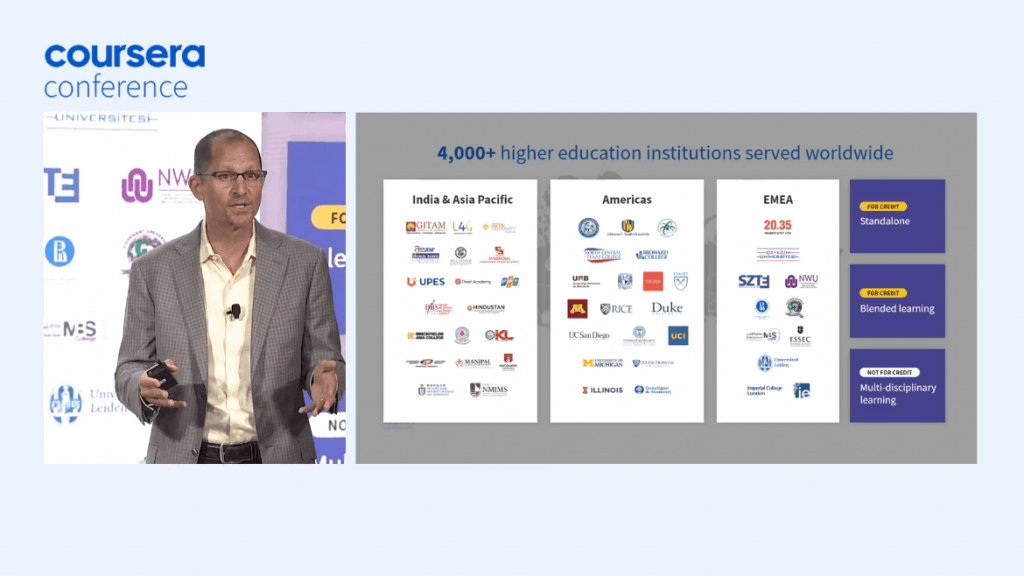
According to Coursera, 4,000 institutions around the world use Coursera for Campus. Last year, in response to the pandemic, Coursera made the majority of their catalog available free to the higher education institutions around the world via Coursera for Campus. This resulted in 2.7 million students joining and 24M enrollments, 70% of them on mobile devices.
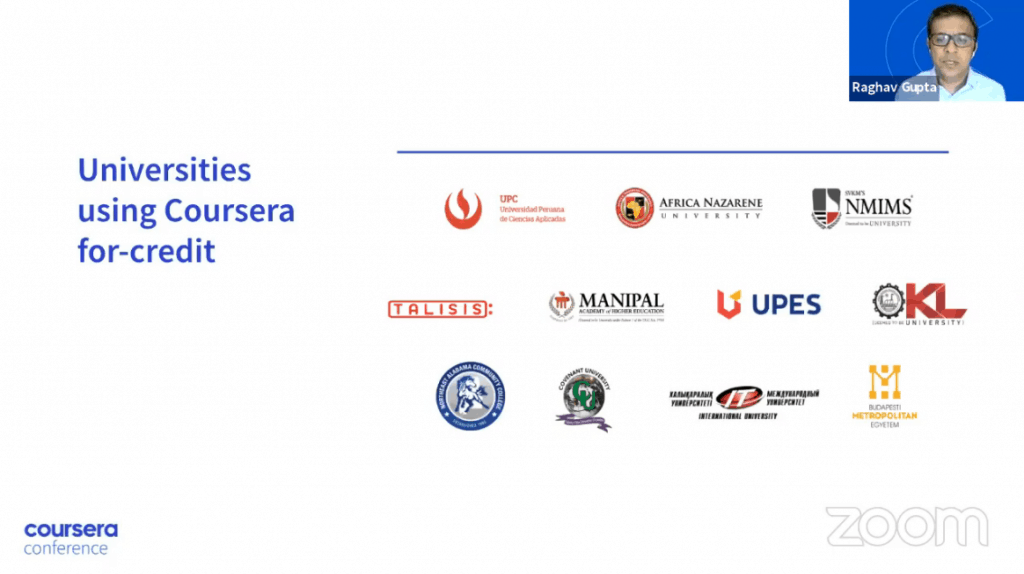
A few universities are also offering academic credit to their students for completing Coursera courses. One university stood out: KL University, where 7,000 students were able to earn credit for over 50,000 online courses (if I’m interpreting the numbers correctly).
A few weeks ago, my colleague @pat wrote about the challenges of peer assessments at scale, which even got a response from a Coursera senior product manager of assessments.
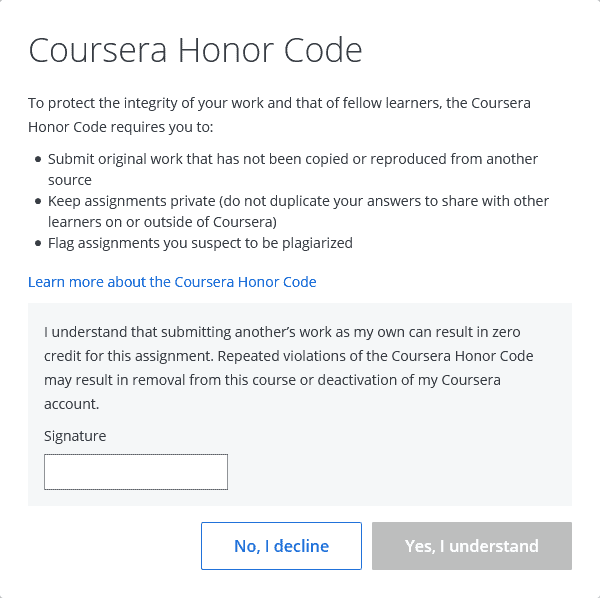
As if on cue, during the conference, Coursera announced several changes related to academic integrity. One is a new prompt shown before submitting peer assessments, reminding learners about Coursera’s Honor Code. The ever-vigilant @pat noticed it two weeks ago. According to Jeremy Rudy, Head of Degrees Product at Coursera, the prompt reduced plagiarism by 15%.
Coursera also introduced a Similarity Score for peer assessments, powered by Turnitin. It tells learners whether Coursera thinks their work is plagiarized before they submit it. Unfortunately, it’s only available for Coursera for Campus — not all Coursera users.
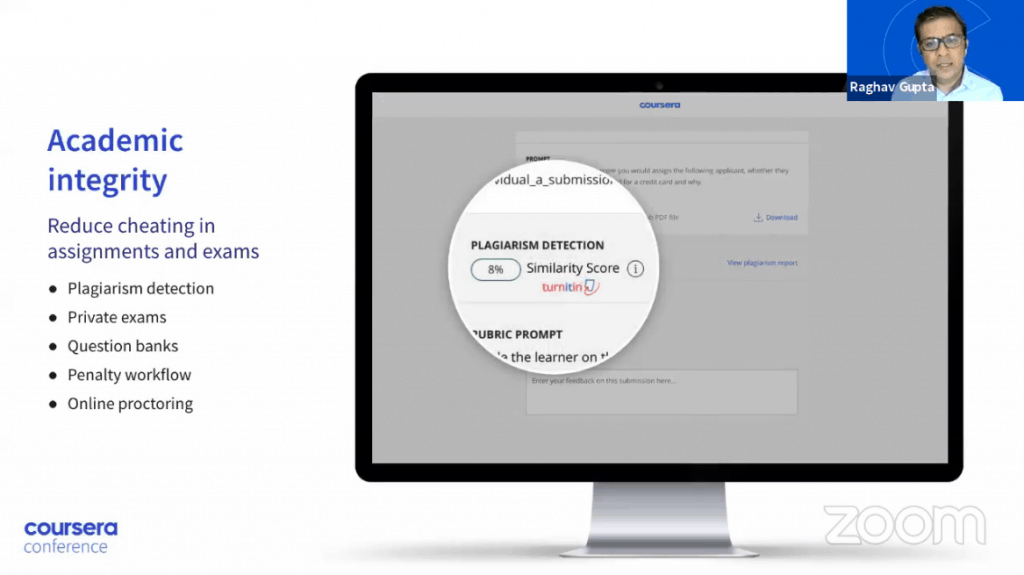
You can find more details about these changes in this blog post and in the following sessions:
- Coursera’s product team keynote
- Mastering For-Credit Online Learning
- Powering For-Credit Online Learning with Coursera for Campus
- Academic Integrity at Scale
Coursera for Governments
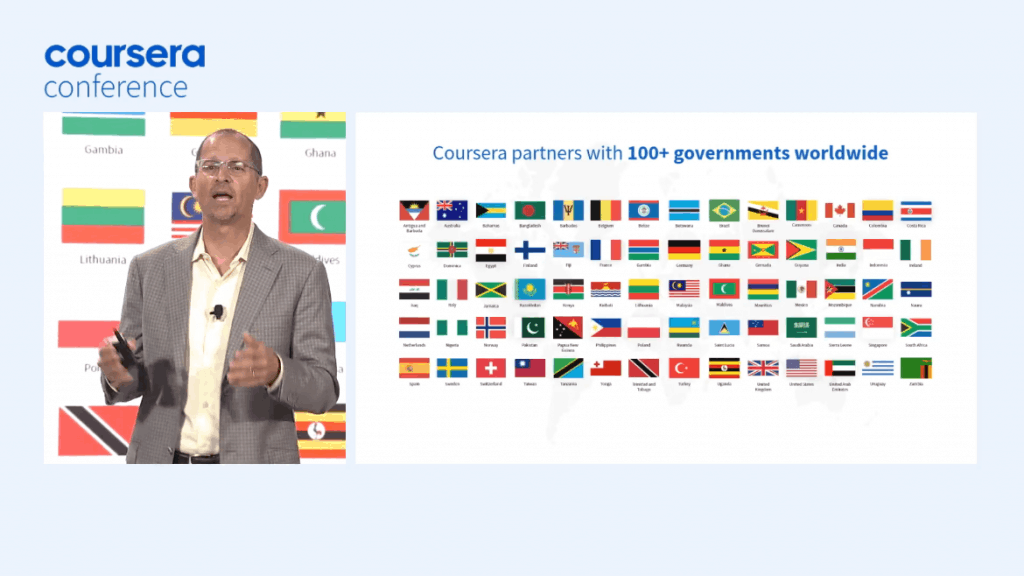
In addition to their higher-education initiative during the pandemic, Coursera also gave governments free access to their catalog via their Workforce Recovery Initiative.
Coursera now partners with 100+ governments worldwide, which has resulted in over 1M citizens joining the platform and over 8.3M enrollments — 71% through mobile.
Select Product Updates
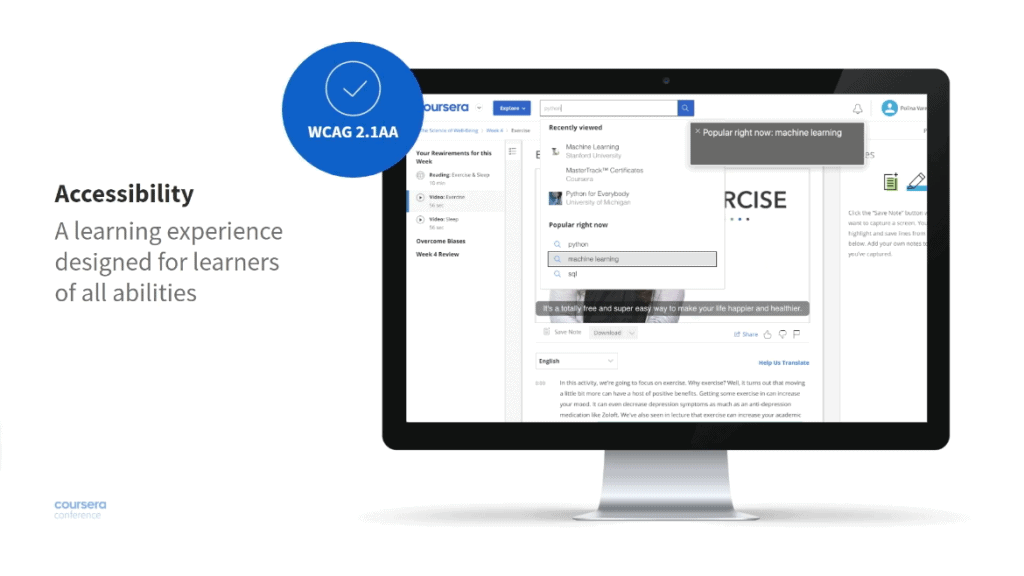
Accessibility
Emily Sands, VP of Data Science, talked about several accessibility improvements across Coursera’s web and mobile platforms. These include conforming to Web Content Accessibility Guidelines (WCAG) 2.1 Level AA. You can find more details in Coursera’s Accessibility session.
Automated Subtitle Translations
Last year, Coursera began supporting right-to-left languages and automatically translated 2,000 courses into 8 different languages: Spanish, French, Portuguese, Russian, German, Vietnamese, Arabic, and Italian.
Coursera Labs
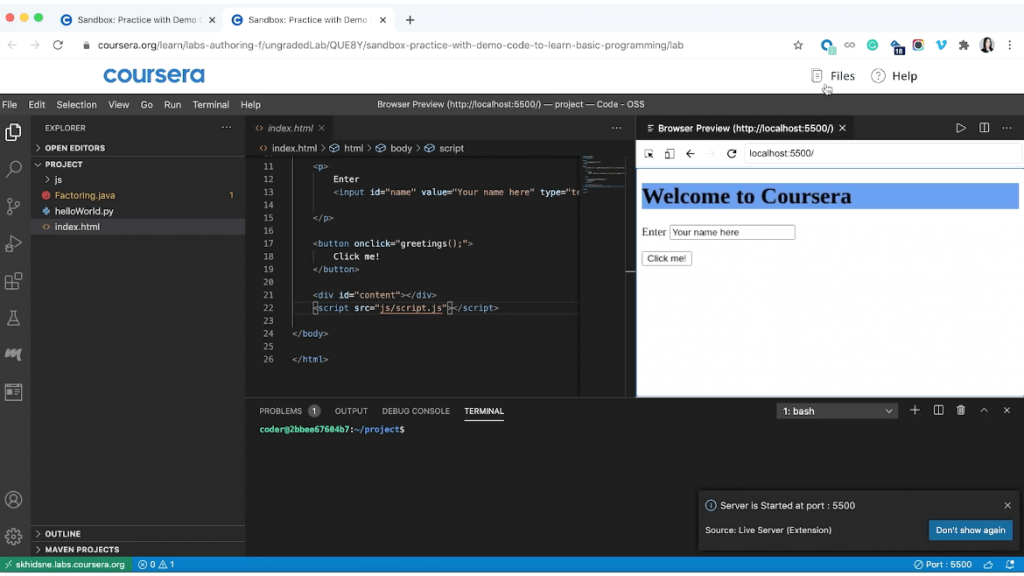
Coursera Labs now supports in-browser Visual Studio Code. This allows learners to access a development environment without having to set it up on their local machine. The environments support 14 programming languages.
Course Authoring Tools
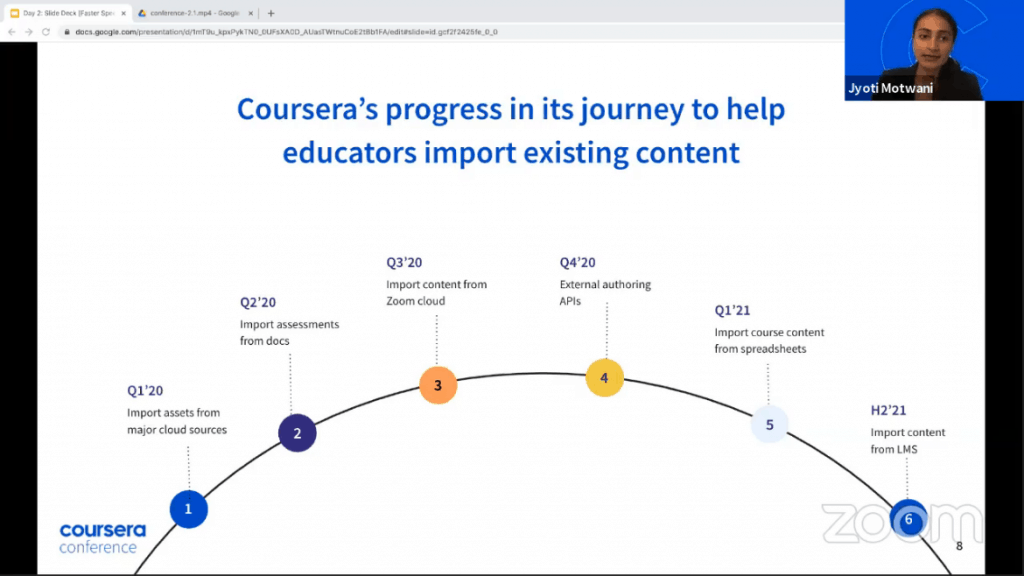
More details about Coursera’s improved authoring tools in this blog post and sessions:
- Faster Speeds, Lower Costs: Improved Authoring for Efficiently Launching Content
- Product team keynote
Coursera shared a lot more. I didn’t cover everything. You can find all the recordings from the Coursera conference here.
Tags

